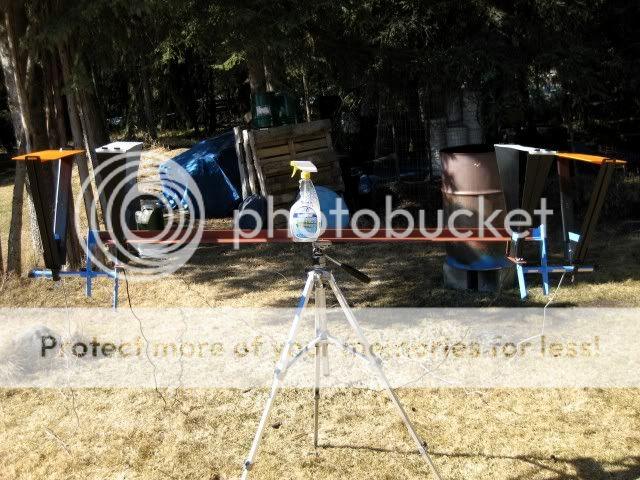jrs
Member
The thing that's been keeping me from going commercial with this has been the $800/each cost (to me) of the Pan/Zoom/Tilt Mega-Pixel camera that is the MINIMUM necessary for seeing itty-bitty holes in great big black targets under a wide range of lighting conditions.
Strangely enough the network link part is what I call dirt cheap by comparison; about $100 including my time to test and confgure two 1000mw transmitters to setup a Local Area Network (LAN) that spans the distance between firing point and target. The target end can be connected to a cheap network switch that then can connect the LAN to all sorts of stuff. One of those things would be a notebook (or desktop if you have a small generator or AC power available) that has a USB 2.0 port, which connects to a webcam (about $30 should get one that can resolve and LCD display on a chronograph).
My plan was to build complete systems including all of the hardware and configure/test it prior to delivery so it becomes a plug and play system. Was trying to keep cost under $1000 then under $1,500 ... I'm almost there, but the camera/resolution problem is the killer.
Using a 12V 7AH battery the radio links will run for DAYS without recharge - solar panels could make the LAN work round the clock for years. Problem is the additional equipment will need more power than that - but a 1KW generator could power a whole lot of equipment for a very long day of shooting.
The idea of having a cronograph at the target end got me to thinking that having the high res camera positioned at the exact point where your scope will be would allow you to be downrange adjusting while watching what it looks like from the firing point ... have to either have two cameras/computers or make one trip back and forth to switch the camera to the target end. Might be worth it in time saving? The camera has a 22:1 zoom ratio so the telephoto view would be (subjectively) about like a 6x or 8x scope in terms of magnification.
We can talk specifics if you want to email me.
[email protected]
Strangely enough the network link part is what I call dirt cheap by comparison; about $100 including my time to test and confgure two 1000mw transmitters to setup a Local Area Network (LAN) that spans the distance between firing point and target. The target end can be connected to a cheap network switch that then can connect the LAN to all sorts of stuff. One of those things would be a notebook (or desktop if you have a small generator or AC power available) that has a USB 2.0 port, which connects to a webcam (about $30 should get one that can resolve and LCD display on a chronograph).
My plan was to build complete systems including all of the hardware and configure/test it prior to delivery so it becomes a plug and play system. Was trying to keep cost under $1000 then under $1,500 ... I'm almost there, but the camera/resolution problem is the killer.
Using a 12V 7AH battery the radio links will run for DAYS without recharge - solar panels could make the LAN work round the clock for years. Problem is the additional equipment will need more power than that - but a 1KW generator could power a whole lot of equipment for a very long day of shooting.
The idea of having a cronograph at the target end got me to thinking that having the high res camera positioned at the exact point where your scope will be would allow you to be downrange adjusting while watching what it looks like from the firing point ... have to either have two cameras/computers or make one trip back and forth to switch the camera to the target end. Might be worth it in time saving? The camera has a 22:1 zoom ratio so the telephoto view would be (subjectively) about like a 6x or 8x scope in terms of magnification.
We can talk specifics if you want to email me.
[email protected]


